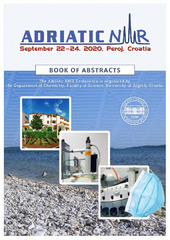Приказ основних података о документу
NMR metabolomics insight into phytochemistry
| dc.creator | Anđelković, Boban | |
| dc.creator | Sofrenić, Ivana | |
| dc.creator | Đorđević, Iris | |
| dc.creator | Ivanović, Stefan | |
| dc.creator | Cvetković, Mirjana | |
| dc.creator | Gođevac, Dejan | |
| dc.creator | Milosavljević, Slobodan | |
| dc.date.accessioned | 2023-01-03T13:05:54Z | |
| dc.date.available | 2023-01-03T13:05:54Z | |
| dc.date.issued | 2020 | |
| dc.identifier.isbn | 978-953-6076-58-1 | |
| dc.identifier.uri | https://cer.ihtm.bg.ac.rs/handle/123456789/5525 | |
| dc.description.abstract | Metabolomics has emerged in recent years as an indispensable tool for the analysis of thousands of metabolites from crude natural extracts, leading to a paradigm shift in natural products drug research. Many of the technologies used in metabolomics have method-specific advantages and drawbacks in terms of diversity of metabolites detected, sensitivity, or resolution. We will describe the use of metabolomic methods for: • Correlation of propolis composition to altitude of collection and revealing its major botanical origin. • revealing cytotoxic metabolites from Mahonia aquifolium stem-bark • application for differentiation of the ambiguous taxonomy of the genus Amphoricarpos Vis. In order to correlate variability in Populus type propolis composition with the altitude of its collection, NMR spectroscopy followed by OPLS was conducted. The botanical origin of propolis was established by comparing propolis spectral data to those of buds of various Populus species. An O2PLS method was utilized to integrate two blocks of data. The utilization of various NMR experiments, in combination with sophisticated multivariate analysis methods, was demonstrated to be a powerful tool to correlate propolis composition to altitude of collection and reveal its major botanical origin. OPLS methods were used to identify changes in the chemical composition of propolis, while O2PLS methods enabled the identification of the botanical origin of propolis.[1] A 1H NMR-based metabolomics method was used to reveal cytotoxic metabolites from Mahonia aquifolium stem-bark. Primary and secondary metabolites in the Mahonia aquifolium extracts were identified by thorough analysis of 1H and 2D NMR spectra, without prior isolation. An OPLS multivariate analysis method was used to correlate the chemical composition of the plant extracts with the results of cytotoxic activity against Human cervical adenocarcinoma cell line.[2] Metabolomic methods were used to get more insight into the ambiguous taxonomy of the genus Amphoricarpos Vis. The 1H NMR spectroscopy combined with multivariate data analysis has been applied. OPLS-DA has been shown to be the best method for clear discrimination of these samples based on the metabolites present in the extracts. 1H NMR fingerprinting in combination with PCA and OPLS-DA showed a clear separation between the species resulting in two groups according to metabolomic similarities. | sr |
| dc.language.iso | en | sr |
| dc.publisher | Zagreb, Croatia : Department of Chemistry, Faculty of Science, University of Zagreb | sr |
| dc.relation | info:eu-repo/grantAgreement/MESTD/Basic Research (BR or ON)/172053/RS// | sr |
| dc.rights | openAccess | sr |
| dc.rights.uri | https://creativecommons.org/licenses/by/4.0/ | |
| dc.source | Book of abstracts - The Adriatic NMR Conference, 22–24 September 2020, Peroj, Croatia | sr |
| dc.subject | metabolomics | sr |
| dc.subject | nmr spectroscopy | sr |
| dc.subject | opls | sr |
| dc.subject | Populus | sr |
| dc.subject | Amphoricarpos | sr |
| dc.title | NMR metabolomics insight into phytochemistry | sr |
| dc.type | conferenceObject | sr |
| dc.rights.license | BY | sr |
| dc.citation.spage | 30 | |
| dc.citation.epage | 30 | |
| dc.identifier.rcub | https://hdl.handle.net/21.15107/rcub_cer_5525 | |
| dc.identifier.fulltext | http://cer.ihtm.bg.ac.rs/bitstream/id/23296/bitstream_23296.pdf | |
| dc.type.version | publishedVersion | sr |


